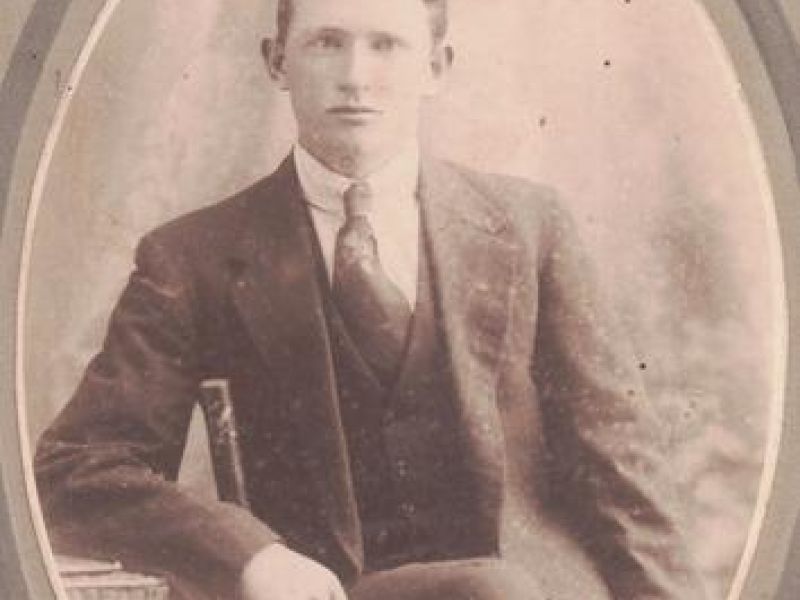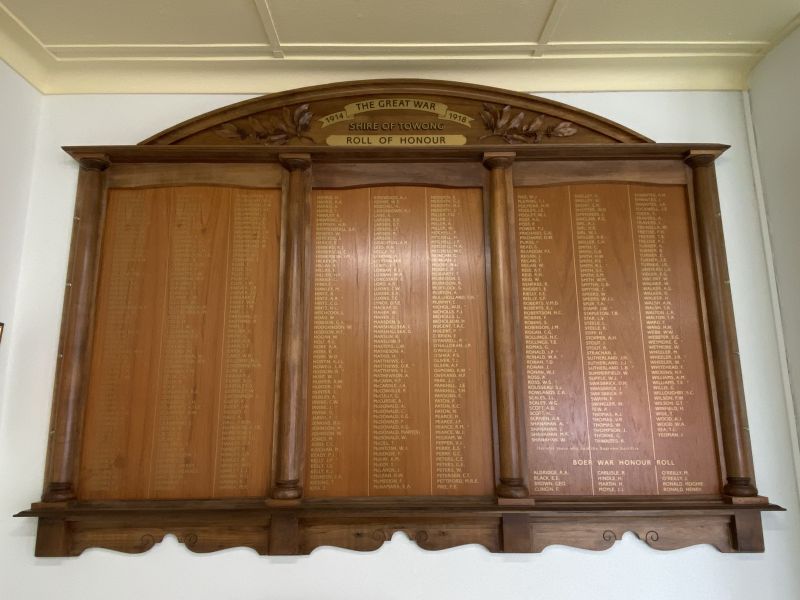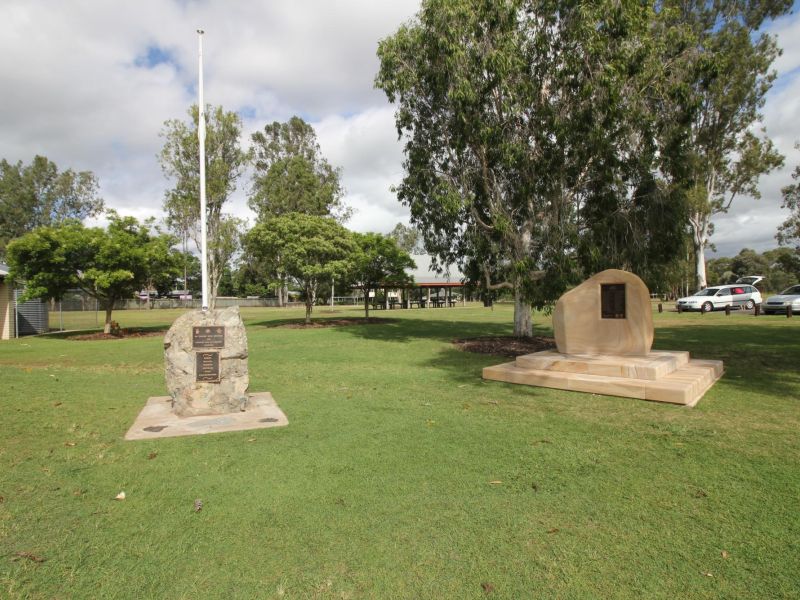George Henry (Jim) Boyce
Jim was born in Beechworth on the 26th of March 1891. He was of ten children to John and Catherine Alice (née Creamer) Boyce. The family lived along Gaps Road near Yackandandah before moving to Tallangatta sometime before 1909. John and Cartherine’s first born child was also named George Henry. Tragedy struck the family on the 9th of April, 1911. John and two of his sons drove back to the homestead from Tallangatta. Reaching the farm, the sons alighted to open the homestead gate and upon returning to the gig found their father dead. The cause of death was attributed to heart disease.
Five of John and Catherine’s sons enlisted during the First World War, Edward, George, Patrick, Frank and Thomas. George and Thomas would both be killed in action, while Patrick would be awarded a Military Medal for his service in action.
Jim enlisted at Melbourne on the 5th of April, 1915. At the time he was working for the Victorian Railways as a porter. He was allotted the Regimental Number 1121 and placed on strength with B Company of the 22nd Battalion. The battalion was to become part of the 6th Brigade of the 2nd Australian Division.
Training took place at Broadmeadows. Amidst the drudgery of drills and exercises to improve their fitness, were trips into Melbourne and boxing matches. The 22nd embarked at Melbourne on HMAT A38 Ulysses on the 8th of May 1915. Also on the Ulysses was the 21st Battalion and 6th Brigade Headquarters. At 1800 hours the ship reached Alexandria in Egypt. The battalion travelled by train to Zeitoun upon which it detrained and marched into the Heliopolis camp. By June of 1915 the camp had gone through many improvements, and now offered every provision for the troops’ health and comfort.
On the 30th of August the battalion joined the ANZAC forces on Gallipoli. This allowed elements of the 2nd Brigade to be rested from the front line trenches at Johnson’s Jolly, linking up with the defences at Lone Pine. While at Gallipoli, Jim experienced the extremes of weather that the Darndenelles could produce. Late September and early October brought severe heat. Water was rationed even further and the flies feasting on the legion of dead bodied left unburied on the slopes transferred disease to the living. The end of November brought bitterly cold winds, rain and eventually snow. Frostbite and hypothermia became rife. The rationing of water meant that the soldiers melted snow in biscuit tins. On the 17th of December Jim was admitted to the field hospital at ANZAC with influenza. He was evacuated to Alexandria on the Dunlace Castle and admitted to No. 1 Auxiliary Hospital at Luna Park in Heliopolis with enteric, or typhoid, fever. In late January of 1916 it was decided that Jim needed to be invalided to Australia so that he could fully recover, so, on the 9th of February he embarked on HMAT A71 Nestor and returned to Australia.
After spending nearly seven months recovering and undergoing training, Jim embarked on HMAT A32 Themistocles, disembarking at Plymouth in the south of England on the 11th of September 1916. He was immediately posted to the 6th Training Battalion in Wiltshire. After two months further training he proceeded overseas to France on the SS Victoria. He finally rejoined his battalion on the 3rd of December 1916. Three days later he was admitted to the New Zealand Stationary Hospital at Amiens suffering from laryngitis. He rejoined his battalion on the 9th of January.
From January through to May, Jim survived the actions that the 22nd were involved in. This included following up the German withdrawal to the Hindenburg Line and the first battle of Bullecourt. On the 23rd of May he was admitted to the 9th Casualty Clearing Station suffering the effects of a veneral disease. He would not rejoin his unit until the 11th of September, 1917.
On the 4th of October the battalion was involved in the action at Broodseinde. This operation involved twelve divisions advancing along a 13 kilometre front. The Australian troops were heavily shelled at their start line and approximately a seventh of their number became casualties even before the attack commenced. As the Australians moved across no-mans land they were confronted by a line of German troops coming towards them. Both sides had decided to launch attacks at the same location and at the same time. The 1st and 2nd Australian Divisions forged through the German assault and gained all of their objectives along the ridge but it came at a cost of over 6500 casualties. Jim suffered gun shot wounds to the back and buttock. He was initially sent to the 3rd Australian Field Ambulance before being transferred to England on the HS Panama. After George recovered he was posted to No. 1 Convalscent Depot at Sutton Veny near Salisbury Plain. Three weeks were then spent with the Overseas Training Brigade at Longbridge Deverhill training in readiness for going back to the frontline. He rejoined his unit on the 27th of January, 1918.
In April the battalion relieved a combined 46th and 47th Battalions in the front line near Dernancourt. Jim’s service record indicates that he was wounded in action on the 10th of April with gunshot wounds to the head. However, there is no record of any action, or casualties, on that day in the battalion’s war diary, so it’s not clear how he came to be severely wounded. Jim was transferred from the 5th Australian Field Ambulance to the 3rd Canadian Stationary Hospital at Doullens in France. On the 13th he succumbed to his wounds.
Jim was buried by the Reverand I Erol in the Doullens Communal Cemetery Extension No. 1 in Picardie, France, plot 6, row C, grave 31. He is also remembered at the Australian War Memorial Roll of Honour, the Villers-Bretonneux Memorial (Australian National Memorial), the Fernvale Hall Honour Roll, and the Boer War and WW1 Roll of Honour at Tallangatta, Victoria. For his service he was awarded the 1914-15 Star, the British War Medal and the Victory Medal.

 Stephen Learmonth
Stephen Learmonth
